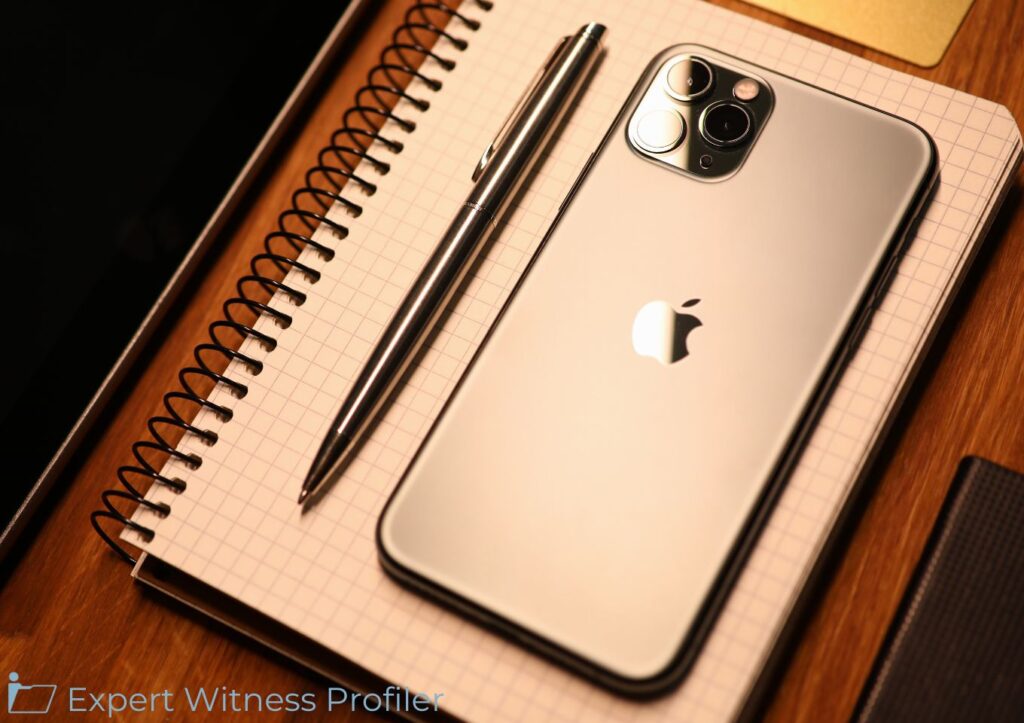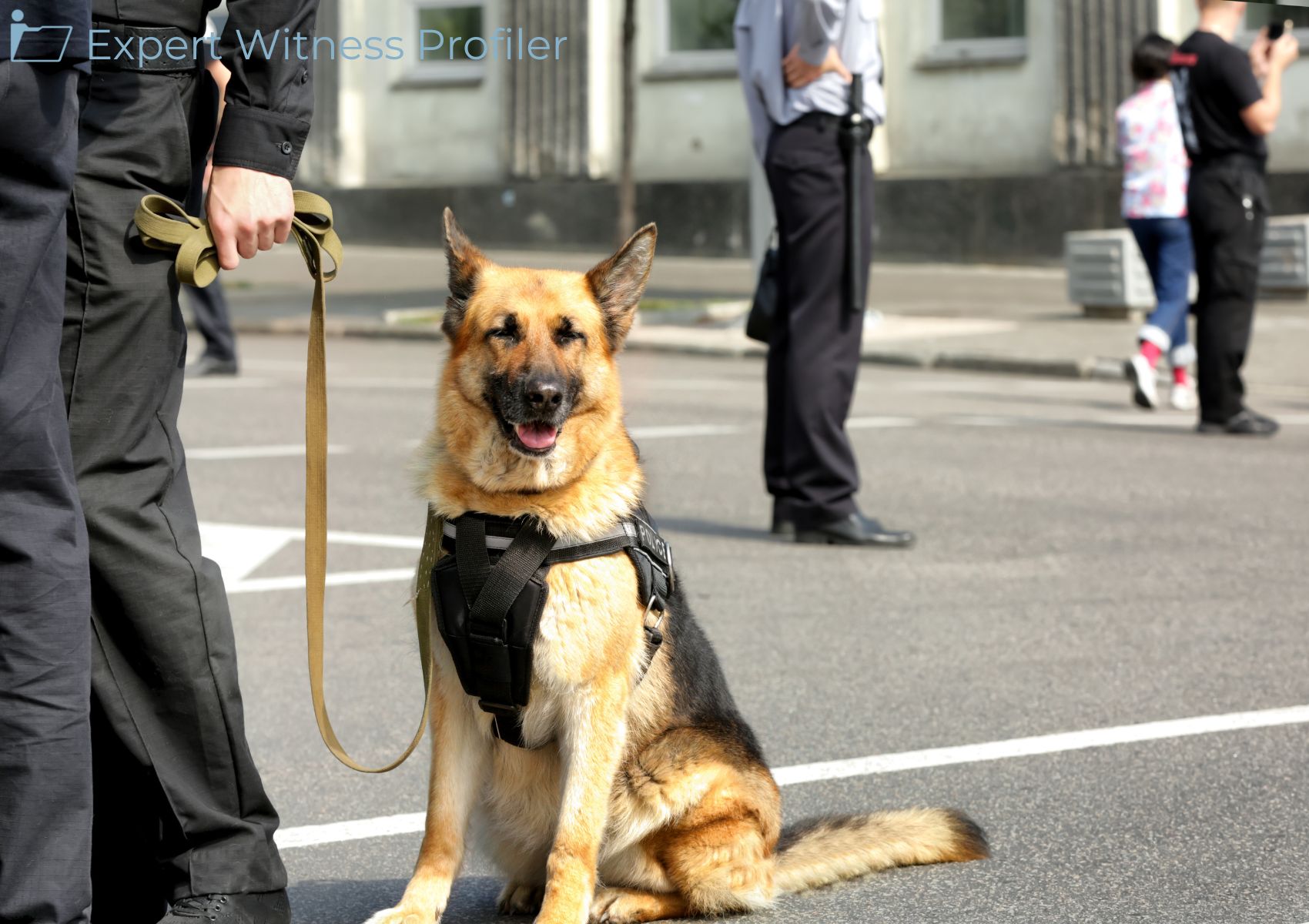Reliability of Frequent Location History Data held to be Insufficiently Established
Posted on March 4, 2024 by Expert Witness Profiler
The Commonwealth alleged that at around 10:51 A.M. on March 31, 2015, the Defendant, a cooperating witness, and Jeromie Johnson participated in a home invasion on Harvard Street in the Dorchester section of Boston. Richard Long, Yvette O’Brien, and O’Brien’s newborn son were at home at the time of the attack. Johnson and the Defendant bound Long and O’Brien with electrical cords, cut Long with a knife, and shot both Long and O’Brien in the head. They then set fire to the house. Long died from his wounds. O’Brien survived the gunshot wound and could describe the events that occurred in the apartment until she was shot in the head, but she was unable to identify the perpetrators. The cooperating witness agreed to testify against the Defendant in exchange for facing reduced charges. The Commonwealth asserted that the cooperating witness would identify the perpetrators and their roles in the home invasion and associated crimes. The Defendant allegedly drove to the crime scene in a white sedan rented by his girlfriend for his use. The Defendant’s car was captured on video being driven down Blue Hill Avenue in Dorchester, with another car carrying Johnson and the cooperating witness following behind. The Defendant’s car was next seen parked on Paxton Street near the scene of the crime. At 10:44 A.M., the Defendant received a call from Johnson lasting over three minutes, and the Defendant called Johnson several times over the next few minutes with no answer. The Defendant’s telephone utilized a cell tower the coverage area of which included the crime scene for these calls. A video camera at a Department of Youth Services facility located across the street from the crime scene captured grainy video footage of two people approaching the victims’ home at 10:51 A.M., and the same video camera captured footage of three people leaving at 11:20 A.M. The Defendant’s car was captured on video at 11:22 A.M. being driven down Blue Hill Avenue.
Prosecuting the Defendant for murder in the first degree and other crimes related to the home invasion, the Commonwealth moved in limine to permit the introduction at trial of frequent location history (FLH) data retrieved from the Defendant’s cell phone, an Apple iPhone 6.
When turned on, an iPhone generated location data points from sources such as global positioning system (GPS) data, nearby wireless computer network (Wi-Fi) access points, short-range wireless Bluetooth connections, and cell site location information (CSLI). These location data points were stored on the iPhone’s “Encrypted B” cache for between twenty-four and forty-eight hours. In 2015, an algorithm on the iPhone would use these data points to create FLH data. The FLH data created by the algorithm consisted of a longitude and latitude coordinate point and a circle around it, representing an amalgamation of the location data points. The radius of the circle, labeled the “uncertainty” in the FLH data, represented the approximate area in which the cell phone was located. The uncertainty radius could change from visit to visit to a frequent location, as could the coordinate point representing the center of the frequent location. FLH data also provided an estimated time that the iPhone entered the location, and an estimated time the iPhone left the location. The algorithm used to convert location data points into FLH data was proprietary, and thus the Commonwealth’s expert did not have access to the algorithm itself during his testing of FLH data reliability. Moreover, it was unclear how the algorithm processed, or weighed, the different location data points generated by the iPhone.
In 2022, a full-file system extraction was performed on the Defendant’s cell phone. This extraction allowed the Commonwealth to access encrypted files on the cell phone, including its FLH data. The FLH data on the cell phone listed 345 frequent location visits. Of particular interest to the Commonwealth was frequent location no. 58. Frequent location no. 58 was centered on coordinates corresponding to a Harvard Street address near the victims’ home. The uncertainty radius of frequent location no. 58 was forty-three meters, or 143 feet, which encompassed the crime scene. The Commonwealth’s proffered expert on FLH data, a senior crime analyst in the office of the district attorney for the Suffolk district (analyst), testified that he interpreted the FLH data retrieved from the Defendant’s cell phone to show that the phone entered the area represented in frequent location no. 58 at 10:36 A.M. on March 31, 2015, and left the area at 11:22 A.M. that day. The Commonwealth therefore contended that the proffered expert testimony on FLH data, if admitted, would corroborate the cooperating witness’s testimony placing the Defendant at the scene of the home invasion.
On September 11, 2023, the trial judge denied the Commonwealth’s motion to permit the introduction of FLH evidence at trial. On the same day, the Commonwealth filed a notice of appeal, believing that the notice of appeal would stay the trial court proceedings pursuant to Mass. R. Crim. P. 15 (e), as appearing in 474 Mass. 1501 (2016). The Defendant filed a response, arguing that the Commonwealth’s notice of appeal did not automatically stay the trial court proceedings. Specifically, the Defendant argued that the appeal procedures in rule 15 were inapplicable, and that the Commonwealth’s only avenue for interlocutory review of the denial of a motion in limine was a petition under G. L. c. 211, § 3, which, in turn, did not automatically stay the trial court proceedings. The trial judge concluded that the Commonwealth’s appeal was outside the scope of rule 15, but nonetheless stayed the proceedings to allow the Commonwealth to pursue relief through a G. L. c. 211, § 3, petition. A single justice of this Court then extended the stay and subsequently reserved and reported the case to the full court, including both the procedural question of whether this appeal was within the scope of rule 15 and the merits of whether the trial judge abused his discretion in denying the Commonwealth’s motion to permit the introduction of FLH data.

Discussion by the Court
As a preliminary issue, the parties disagreed as to whether the Commonwealth may appeal from the denial of its motion to admit expert testimony under Mass. R. Crim. P. 15 (a) (2), as appearing in 474 Mass. 1501 (2016) (rule 15 [a] [2]), or whether its sole avenue for interlocutory review was a petition under G. L. c. 211, § 3.
The text of rule 15 (a) (2) provided for interlocutory appeal from “an order determining a motion to suppress evidence prior to trial.” By its express terms, rule 15 (a) (2) “did not encompass other interlocutory rulings, in part for sound reasons of judicial economy, as such ‘rulings were subject to change when the case unfolds.” Although the text of rule 15 (a) (2) was directed only at motions to suppress, a narrow exception to this general rule was allowed: “if a motion to exclude all or most of the Commonwealth’s incriminating evidence is allowed, and if, as a practical matter, that ruling (if permitted to stand) would terminate the prosecution, the Commonwealth may seek leave to appeal pursuant to [rule 15 (a) (2)].”
The Commonwealth suggested that rule 15(a)(2) should be interpreted more broadly to encompass other situations where “critical” evidence is excluded, even where the evidence excluded does not have the practical effect of terminating the criminal proceeding. The Commonwealth thus proposed that, although the exclusion of its expert’s testimony did not prevent it from introducing all or most of its incriminating evidence at trial, the instant appeal was properly brought under rule 15(a)(2) because the expert’s testimony regarding FLH data was “critical” to the case against the Defendant. Because its case at trial relied significantly on testimony by a cooperating witness procured in exchange for a reduced sentence, the Court agreed with the Commonwealth that evidence corroborating the cooperating witness’s testimony (and, thus, bolstering the credibility of that testimony) might fairly be described as “critical” to the prosecution’s case. Nonetheless, the Commonwealth’s invitation to expand the scope of rule 15(a)(2) to include the ruling on the motion in limine in the instant case was declined by the Court. The plain text of rule 15(a)(2) referred only to motions to suppress and thus set out the general rule.
The Court determined that the Commonwealth’s avenue for interlocutory review of the ruling was a petition for extraordinary relief under G. L. c. 211, § 3, rather than an interlocutory appeal under rule 15 (a) (2).
As for whether the trial court abused its discretion in holding the Commonwealth’s failure to establish the reliability of FLH data, the Court stated that when proposed expert testimony uses a new theory, or new methodology to apply an accepted theory, the proponent must establish its reliability using a Daubert-Lanigan analysis.
When considering a motion to introduce expert testimony, a judge should initially consider five nonexclusive factors in determining the reliability of proposed scientific evidence:”whether the scientific theory or process (1) has been generally accepted in the relevant scientific community; (2) has been, or can be, subjected to testing; (3) has been subjected to peer review and publication; (4) has an unacceptably high known or potential rate of error; and (5) is governed by recognized standards.” Under the Daubert-Lanigan standard, “the judge, acting as gatekeeper, is responsible for making a preliminary assessment whether the theory or methodology underlying the proposed testimony is sufficiently reliable to reach the trier of fact.”
As an initial matter, the Commonwealth contended that the trial judge erred in identifying the relevant field of expertise as cellular technology, rather than digital forensics. It claimed that this error evidenced a misunderstanding of FLH data and contributed to the trial judge’s erroneous conclusion that the analyst was not qualified to testify as an expert on FLH data. Contrary to these claims, it was declared on appeal that the trial judge correctly understood the analyst’s testimony on FLH data, and the relevant required expertise, and decided the pertinent issue: whether the Commonwealth had met its burden of establishing the reliability, under the Daubert-Lanigan standard, of FLH data.
Regarding the first Daubert-Lanigan factor, general acceptance by the relevant scientific community, the trial judge found that the primary evidence in support of general acceptance was the analyst’s conclusory testimony to that effect, which, as the trial judge noted, was not well supported by the evidence in the record. The articles submitted in evidence by the Commonwealth in support of the analyst’s testimony largely discussed the technology that produced the location data points used as inputs by the FLH algorithm to output FLH data and instead of discussing the reliability of the FLH data themselves. The analyst identified two digital forensics experts whose writing he claimed supported his conclusion that FLH data had been deemed reliable by the scientific community, yet Commonwealth neglected to submit articles by these authors in evidence. Accordingly, it was noted on appeal that the trial judge did not abuse his discretion in concluding that the Commonwealth failed to meet its burden of showing by a preponderance of the evidence that FLH data had been generally accepted as reliable by the scientific community.
When Commonwealth argued that because the FLH algorithm used as its inputs location data sources generally regarded as reliable (such as GPS, CSLI, and Wi-Fi location data), it meant that the FLH data output by the algorithm consequently was also generally regarded as reliable. The Court, however, held that even if the inputs used by the FLH algorithm were generally deemed reliable, the FLH data outputs were not ipso facto reliable, especially given the lack of scientific literature or adequate testing to support reliability.
As for the second Daubert-Lanigan factor, whether the technology can be or has been tested, it was held that the trial judge did not abuse his discretion in holding that there was not sufficient testing to establish the reliability of FLH data. The trial judge found that the analyst’s experiments with FLH data had a small sample size. The analyst conducted tests of FLH data reliability using a “jailbroken”iPhone (test iPhone) that was similar, but not identical, to the iPhone associated with the Defendant. In other words, to test the reliability of FLH data, the analyst jailbroke an iPhone 5C, which allowed him access to information that is ordinarily encrypted and inaccessible to an iPhone user. He brought the jailbroken iPhone to five different locations, examined the underlying location data points gathered by the iPhone at those locations from sources such as CSLI, Wi-Fi, and GPS, and compared these underlying location data points to the FLH data outputs produced on those locations. The analyst visited each of the five locations two or three times, for a total of twelve experiments. Despite his testing, the analyst did not know the algorithm used in creating FLH data and did not know how various factors were weighed to create FLH data outputs. The analyst also could not explain how the uncertainty radius for a frequent location was determined. He was able to identify that the uncertainty radius and center coordinate point for a frequent location could change with each visit to that location, but he was unable to explain why the uncertainty radius for a frequent location changed or whether data from previous visits contributed to how FLH data changed after a subsequent visit to the location. Moreover, while the FLH data for some locations included a “confidence level,” the analyst could not explain what the confidence level meant, why some locations had a confidence level and others did not, or how the confidence level was calculated.
The Commonwealth also argued that the trial judge abused his discretion by failing to make findings regarding evidence that certain frequent location visits identified on the Defendant’s cell phone were corroborated by other data on the phone. The Commonwealth asserted that the data corroborating the frequent location data bolstered the analyst’s testing as evidence that FLH data are reliable. For example, the analyst testified that frequent location no. 73 on the Defendant’s cell phone corresponded to a location at a mall in Newton. The FLH data suggested that the cell phone was at frequent location no. 73 from 7:26 P.M. to 7:32 P.M. on March 29, 2015, two days before the murder. The uncertainty radius for frequent location no. 73 was ninety-one meters, meaning the FLH data represented that the cell phone was likely within a ninety-one meter radius of the determined center point for location no. 73. Two images recovered from the Defendant’s cell phone were taken at 7:31 P.M. and 7:32 P.M. on March 29, and appeared to have been taken in the northwest corner of the mall parking garage. The Commonwealth suggested that the pictures corroborated the reliability of frequent location no. 73 because they placed the Defendant near the location during the relevant time. The analyst testified regarding four other frequent locations extracted from the Defendant’s cell phone that were corroborated either by pictures taken on the phone indicating it was in the area of the frequent location during the relevant time period, or by data showing the phone connected to Wi-Fi networks associated with a location while the FLH data indicated the phone was at the location.
It was held on appeal that even if evidence of the five corroborated locations were considered alongside the twelve experiments conducted by the analyst, it was well within the trial judge’s discretion to hold that the Commonwealth had not met its burden of showing that FLH data had been sufficiently tested to show its reliability. To sum it up, judges were not required to make explicit findings on all the evidence presented at a hearing.
As for whether the trial judge abused his discretion in his discussion of the other Daubert-Lanigan factors of whether FLH data evidence (3) had been subjected to peer review and publication; (4) had an unacceptably high known or potential rate of error; and (5) was governed by recognized standards, it was observed that the testing of FLH data performed by the analyst was neither peer-reviewed nor published. In terms of other publications, the trial judge found that the articles and materials submitted by the Commonwealth discussing the underlying technology (GPS, Wi-Fi, and CSLI) were not “particularly instructive.” He also noted that there were “very few references to FLH in any of the papers submitted into evidence.”
The trial judge held that the fifth prong of Daubert-Lanigan, recognized standards, was satisfied by the existence and admission in evidence of Federal regulations setting standards for analyzing cell phone location information generally. The Commonwealth argued on appeal that because Federal regulations existed for cell phone location information and were in effect at the time of the murder, the fourth prong, known or potential rate of error was sufficiently met. The Commonwealth did not otherwise provide any evidence or argument as to why the trial judge erred in holding that it had failed to meet its burden on the fourth prong. No abuse of discretion was observed by the trial judge on appeal when it was held that the fourth prong had not been met, particularly because of the various characteristics of FLH data that the analyst could not explain, including the uncertainty radius and confidence level.
Held
Because the challenged evidentiary ruling involved neither the determination of a motion to suppress nor the pretrial exclusion pursuant to a motion in limine of evidence that, as a practical matter, would terminate the Commonwealth’s prosecution of the Defendant, it was held on appeal that the Commonwealth’s avenue for interlocutory review of the ruling was a petition for extraordinary relief under G. L. c. 211, § 3, rather than an interlocutory appeal under Rule 15 (a) (2). Moreover, having considered the merits of the Commonwealth’s petition, it was concluded that the trial judge did not abuse his discretion in denying the Commonwealth’s motion in limine to admit the proffered expert testimony regarding the FLH data. Accordingly, the case was remanded to the county court for entry of a judgment affirming the trial court judge’s order and remanding the matter to the trial court for further proceedings consistent with this opinion.
Key Takeaways:
The trial judge found that the Commonwealth did not adequately demonstrate the general acceptance of FLH (frequent location history) data as reliable by the scientific community. Despite arguments from the Commonwealth, including testimony from an analyst, the evidence presented was deemed insufficient to establish widespread acceptance of FLH data’s reliability. Additionally, the Court held that there was not enough testing to establish the reliability of FLH data outputs. The analyst’s experiments were criticized for their small sample size and lack of understanding of the algorithm used to generate FLH data. The Commonwealth also argued that certain frequent location visits identified on the Defendant’s cell phone were corroborated by other data, such as pictures taken on the phone or data showing the phone connecting to Wi-Fi networks associated with a location. However, the Court determined that this evidence, when considered alongside the analyst’s experiments, did not sufficiently demonstrate the reliability of FLH data. The Court assessed the case against the Daubert-Lanigan factors, including peer review, potential rate of error, and recognized standards. Lack of peer review and publication, as well as unanswered questions regarding the reliability of FLH data, contributed to the court’s decision. While Federal regulations existed for analyzing cell phone location information, the Court held that the Commonwealth failed to meet its burden in demonstrating that FLH data met recognized standards. Overall, this case underscores the importance of rigorous testing, peer review, and adherence to recognized standards in establishing the reliability of expert testimony, particularly in cases involving complex technological evidence.
Case Details:
| Case Caption: | Commonwealth v. Arrington |
| Docket Number: | SJC-13499 |
| Court: | Massachusetts Supreme Judicial Court |
| Citation: | SJC-13499 (Mass. Feb. 20, 2024) |
| Order Date: | Feb 20, 2024 |





